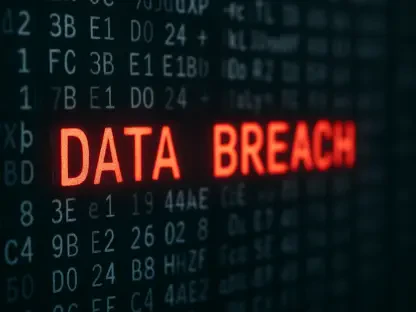In an era where remote work and secure data collaboration are paramount for enterprises worldwide, the discovery of a critical vulnerability in a widely adopted file-sharing platform raises alarming concerns about cybersecurity readiness. Gladinet’s Triofox, a solution trusted by countless organizations for seamless remote access and file management, has come under intense scrutiny due to a severe flaw that could compromise entire systems. This review dives deep into the technical intricacies of this platform, evaluating its features against the backdrop of a high-impact security threat that has caught the attention of global cybersecurity experts. The stakes couldn’t be higher as businesses grapple with protecting sensitive data in an increasingly hostile digital landscape.
Overview of Triofox and Its Role in Enterprise Environments
Triofox stands as a cornerstone for many organizations, offering a robust file-sharing and remote access solution designed to bridge the gap between on-premises infrastructure and cloud-based flexibility. Its appeal lies in enabling secure data collaboration across distributed teams, making it a vital tool for industries that prioritize operational continuity and data integrity during remote work scenarios. The platform’s ability to integrate with existing systems while providing user-friendly access controls has positioned it as a go-to choice for enterprises navigating the complexities of modern IT environments.
However, the reliance on such platforms comes with inherent risks, especially when vulnerabilities surface that could undermine their core functionality. A recent security flaw has exposed a critical weakness in Triofox, highlighting the challenges of maintaining airtight security in software that handles sensitive information. This situation underscores the broader implications for businesses that depend on Triofox, pushing the conversation toward the urgent need for fortified defenses in file-sharing technologies.
Technical Analysis of a Severe Security Flaw
Unpacking the Improper Access Control Issue
At the heart of this review is a critical vulnerability identified as CVE-2025-12480, which carries a staggering CVSS score of 9.8, signaling its potential for catastrophic impact. Affecting Triofox versions prior to 16.7.10368.56560, this improper access control flaw allows unauthorized individuals to access initial setup pages even after the system has been configured. Such exposure enables attackers to manipulate critical components, effectively granting them a backdoor into the platform’s core functionalities.
The implications of this flaw are profound, as it bypasses fundamental security barriers meant to protect administrative interfaces. By exploiting this vulnerability, malicious actors can gain unchecked entry to sensitive areas of the system, setting the stage for deeper incursions. This technical lapse reveals a significant oversight in access management protocols, raising questions about the platform’s design resilience against determined adversaries.
Exploiting Host Header Manipulation
Further dissecting the vulnerability, the attack chain often begins with HTTP Host header manipulation, a tactic employed by a threat actor group tracked as UNC6485. By spoofing localhost headers, attackers can circumvent access controls to reach restricted pages such as AdminDatabase.aspx, which should remain inaccessible post-setup. This method exploits a misconfiguration in origin validation and an over-reliance on unverified host headers, creating an entry point for unauthorized access.
This exploitation technique demonstrates a sophisticated understanding of web application weaknesses, allowing attackers to create powerful accounts like a ‘Cluster Admin’ with full system privileges. Such access not only compromises the immediate environment but also paves the way for broader network infiltration. The ease with which controls can be bypassed through this method is a stark reminder of the need for rigorous validation mechanisms in software architecture.
Attack Strategies and Their Consequences
Leveraging Features for Malicious Code Execution
One of the most concerning aspects of this vulnerability’s exploitation is the abuse of Triofox’s built-in antivirus feature to execute malicious payloads. Attackers redirect the antivirus engine path to point to harmful scripts, which are then triggered under SYSTEM account privileges whenever files are uploaded to shared directories. This approach transforms a protective mechanism into a weapon, showcasing the ingenuity of threat actors in turning legitimate features against their intended purpose.
The ability to execute code with such high-level permissions amplifies the potential damage, as it grants attackers near-total control over the affected system. This method’s sophistication highlights a critical flaw in feature design, where insufficient safeguards allow for unintended misuse. Enterprises using Triofox must recognize the dual-edged nature of such functionalities and the risks they pose when exploited.
Post-Exploitation Tactics and Persistence
Following initial access, attackers deploy a range of post-exploitation tactics to maintain their foothold and expand their reach within compromised networks. Disguised installers mimicking legitimate software like Zoho UEMS are used to install remote access tools such as Zoho Assist and AnyDesk, facilitating network enumeration and privilege escalation. These tools enable threat actors to modify domain groups and steal credentials, deepening their control over the environment.
Additionally, persistence is achieved through mechanisms like SSH tunnels established via tools such as Plink or PuTTY, connecting to command-and-control servers for covert RDP access. This setup often disguises malicious traffic as legitimate remote management activity, making detection challenging. The breadth of these tactics illustrates the comprehensive nature of the attack, targeting multiple layers of an organization’s infrastructure for sustained exploitation.
Broader Trends and Industry Implications
The exploitation of Triofox reflects a persistent trend in cybersecurity where unpatched software remains a prime target for threat actors, even after fixes are available. A notable delay between the release of a patch in June and observed attacks in August points to a widespread lag in update adoption among users. This gap exposes a systemic issue in how organizations prioritize and implement critical security updates, often leaving them vulnerable to known threats.
Security researchers from prominent groups emphasize the necessity for robust access controls and validation processes to prevent similar incidents. Their consensus highlights a recurring theme: software features designed for utility can become liabilities if not adequately secured. This duality necessitates a reevaluation of how platforms like Triofox balance functionality with security, ensuring that convenience does not come at the expense of safety.
Sector-Specific Risks and Real-World Impact
Certain industries, particularly those heavily reliant on remote access and file-sharing solutions, face heightened risks from this Triofox vulnerability. Sectors such as finance, healthcare, and legal services, where data sensitivity is paramount, are especially susceptible to the consequences of unauthorized access. A breach in these environments could lead to significant data leaks, financial losses, and operational disruptions, undermining trust and stability.
Moreover, the inclusion of another related flaw, CVE-2025-11371, in CISA’s Known Exploited Vulnerabilities catalog signals a pattern of security concerns with Triofox that could attract further malicious attention. The cascading effects of such vulnerabilities can disrupt critical workflows, emphasizing the urgent need for affected organizations to address these risks. The real-world stakes of failing to secure such platforms are evident in the potential for widespread harm across multiple sectors.
Mitigation Challenges and Strategies
Addressing this vulnerability presents several challenges, including the slow pace of patch adoption and the difficulty in detecting sophisticated attack chains that blend malicious activity with legitimate processes. Many organizations struggle with the logistics of updating complex systems without disrupting operations, often delaying critical fixes. This inertia compounds the risk, as attackers exploit known flaws in the interim.
Recommended mitigation strategies include upgrading to the latest Triofox version, 16.7.10368.56560, to eliminate the CVE-2025-12480 flaw. Beyond updates, auditing admin accounts for unauthorized additions and securing antivirus configurations are essential steps to block exploitation pathways. Monitoring for anomalous outbound SSH traffic and utilizing specific queries to detect attacker tools within networks further bolster defenses against persistent threats.
Looking Ahead: Security Prospects for File-Sharing Platforms
Speculation on Triofox’s future security posture suggests a pressing need for enhancements to prevent the recurrence of similar vulnerabilities. Potential updates might focus on strengthening access control frameworks and embedding stricter validation checks to thwart header manipulation tactics. Such improvements could restore confidence in the platform, provided they are implemented with transparency and urgency.
The evolving threat landscape targeting file-sharing solutions indicates that proactive defense mechanisms will be crucial for staying ahead of adversaries. As cyber threats grow in complexity, enterprises may demand stricter cybersecurity standards in software development, pushing vendors to prioritize security from the ground up. This shift could redefine how platforms like Triofox are designed and maintained over the coming years, from now through 2027 and beyond.
Final Thoughts and Next Steps
Reflecting on this critical review, the examination of Triofox revealed a platform with significant strengths in facilitating enterprise collaboration, but one that stumbled severely due to a high-impact security flaw. The sophisticated exploitation by threat actors exposed deep vulnerabilities in access controls and feature design, challenging the trust placed in such solutions. The analysis underscored the persistent gap in timely patching that left many systems exposed to calculated attacks.
Moving forward, organizations using Triofox are advised to prioritize immediate updates and adopt a multi-layered security approach to mitigate risks. Implementing rigorous monitoring for unusual network activity and reevaluating the configuration of built-in features emerged as actionable steps to prevent future compromises. Additionally, fostering a culture of rapid response to security patches could serve as a vital lesson, ensuring that the digital tools integral to modern business remain shields rather than gateways for cyber threats.









